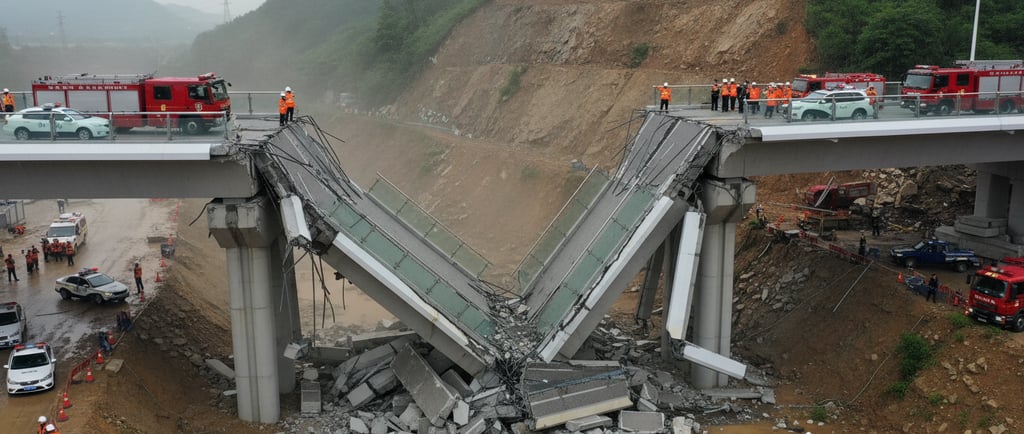MSM NEWS: Analyzing the Partial Collapse of the Hongqi Bridge Lessons Learned
Partial collapse of the Hongqi Bridge in China A section of the recently opened Hongqi Bridge collapsed after a landslide. There were no casualties according to authorities, but the failure raises questions about geotechnical assessment, drainage, and maintenance in large infrastructure projects.
11/12/20251 min read


Introduction to the Hongqi Bridge Incident
The recent partial collapse of the Hongqi Bridge in China, which was inaugurated just a short period ago, has raised significant concerns regarding the integrity of infrastructure projects. This unfortunate event occurred following a landslide, but fortunately, authorities have reported no casualties. The incident brings to light the critical importance of geotechnical assessment, effective drainage systems, and ongoing maintenance in large-scale construction endeavors.
The Cause of the Collapse: A Closer Look
Initial investigations suggest that the landslide was the primary catalyst for the partial failure of the bridge. Landslides often occur due to a combination of factors, including heavy rainfall, soil saturation, and geological instability. Such events can exert extreme pressure on structures designed to withstand environmental forces. The Hongqi Bridge, being a significant infrastructural investment, necessitated comprehensive geotechnical assessments prior to its opening. The absence of anticipated risks could indicate a lapse in thorough evaluations, raising questions about the methodologies employed by engineering teams during the planning stages.
Implications for Future Infrastructure Projects
The collapse serves as a reminder of the challenges inherent in infrastructure development. It emphasizes the need for meticulous attention to geotechnical assessments, particularly in regions prone to natural disasters like landslides. Engineers and planners must prioritize implementing advanced forecasting models and robust drainage systems to mitigate potential risks. Continuous monitoring and maintenance are equally vital, as they provide insights into structural health and longevity.
Moreover, stakeholders must advocate for establishing stricter regulatory frameworks overseeing the geotechnical evaluation processes for infrastructural projects. This incident at the Hongqi Bridge calls for collaborative efforts between engineers, geologists, and government agencies to enhance safety standards and ensure that infrastructure projects meet the required resilience against natural forces.
In conclusion, while the Hongqi Bridge incident did not result in casualties, it highlights a pressing need for improved methodologies in engineering practices. The focus on comprehensive geotechnical assessments, effective drainage systems, and meticulous ongoing maintenance will be integral to the success of future infrastructure projects. By learning from this experience, we can foster a safer and more sustainable built environment for generations to come.
MSM News
Follow news and analysis accurately.
All rights reserved MSM News © 2025.
Privacy Policy
Contact

